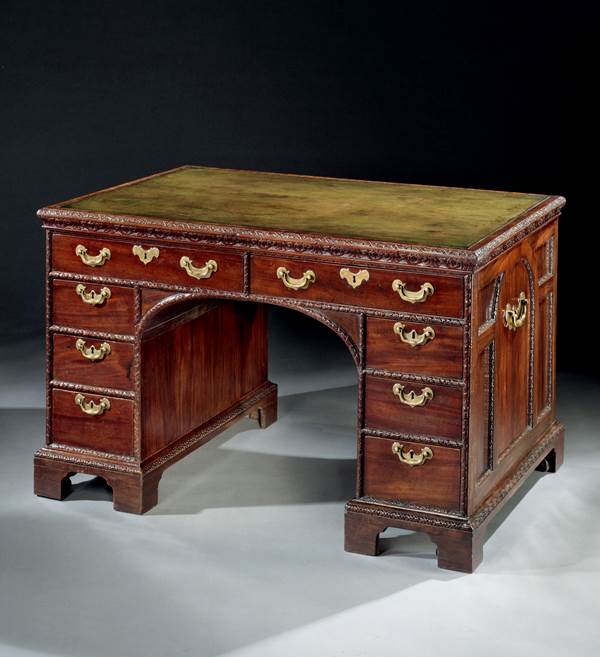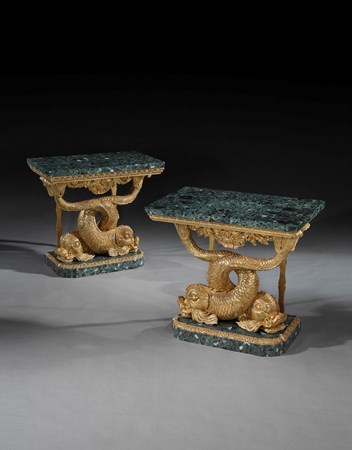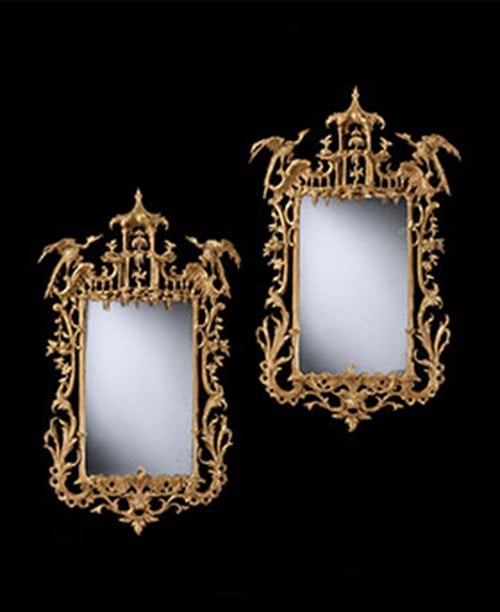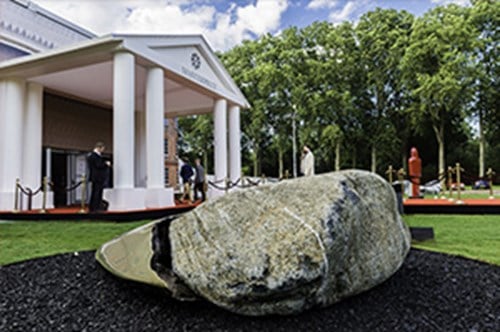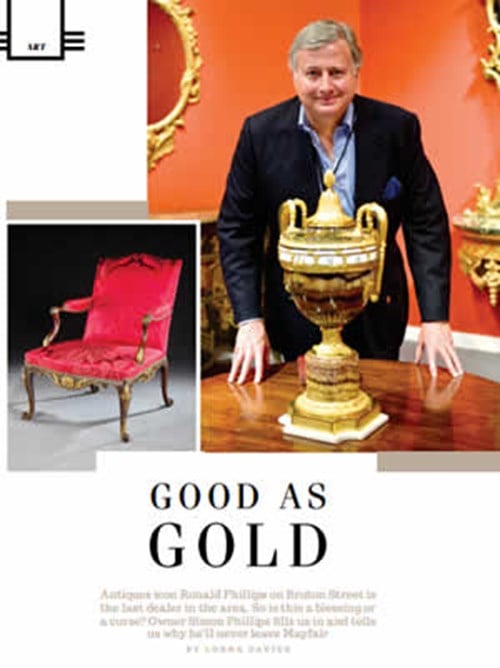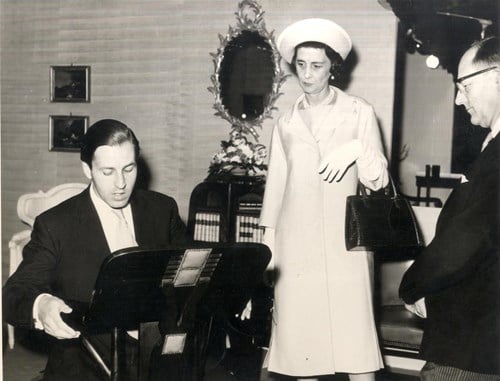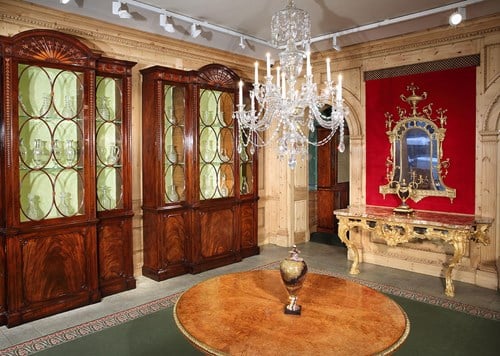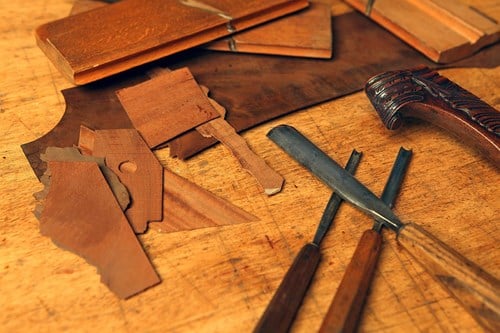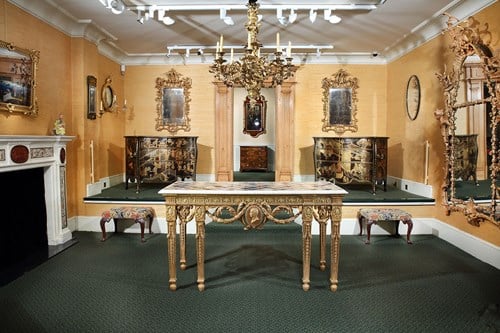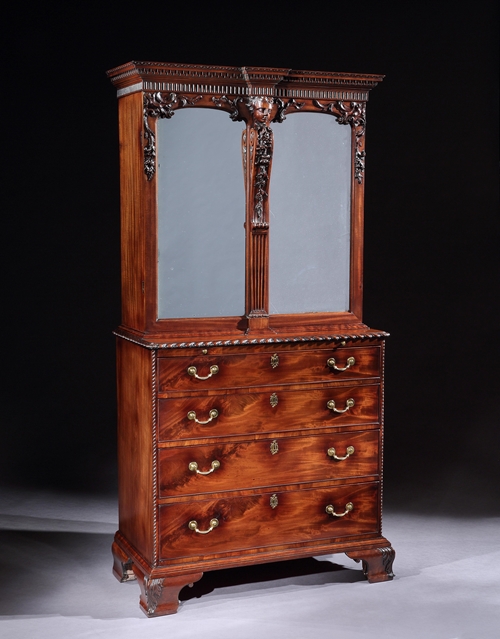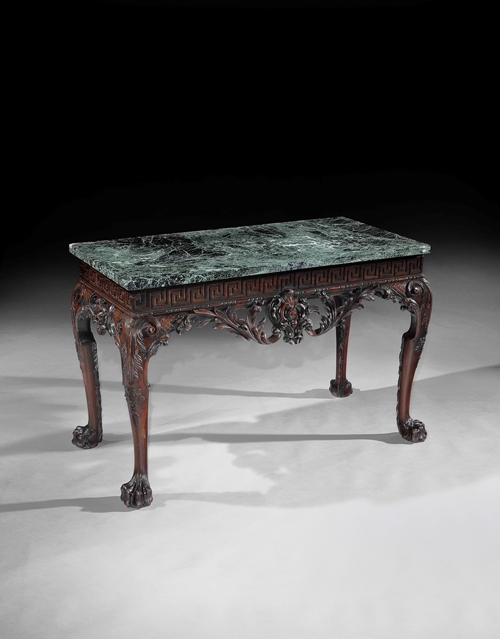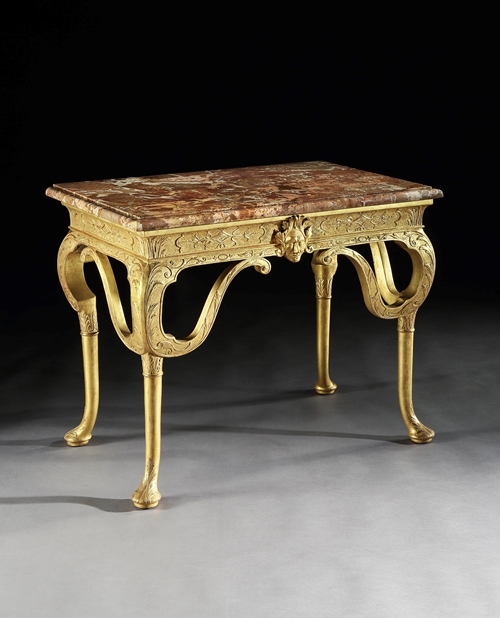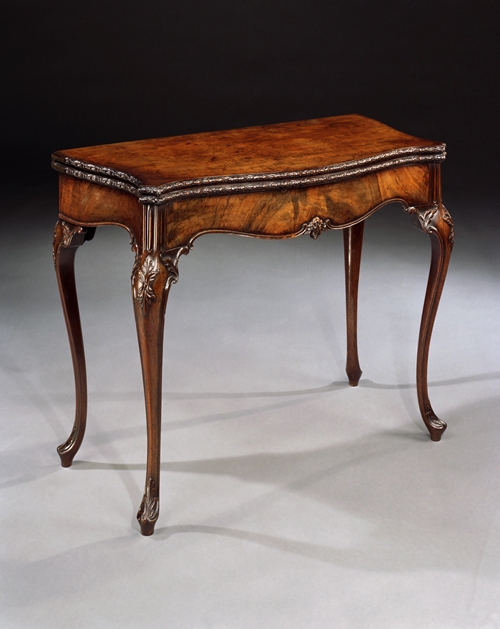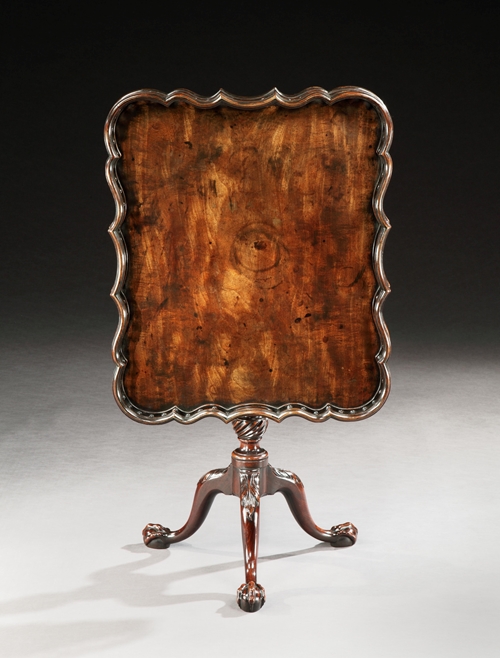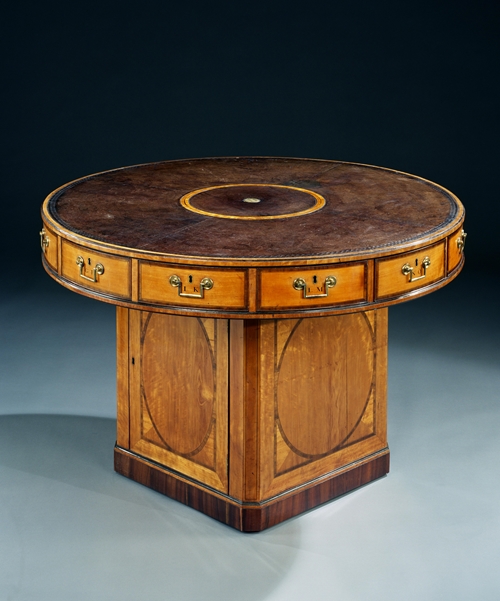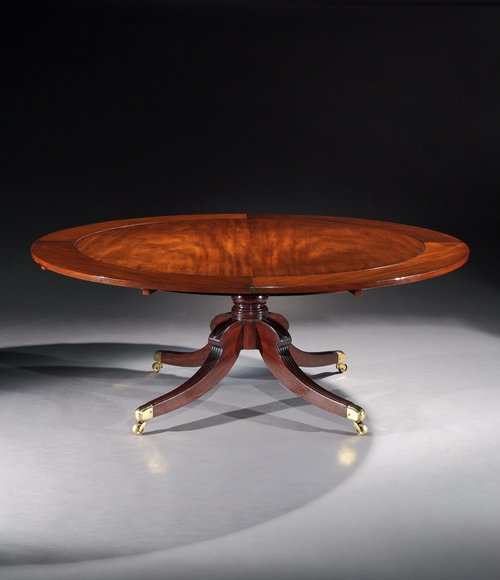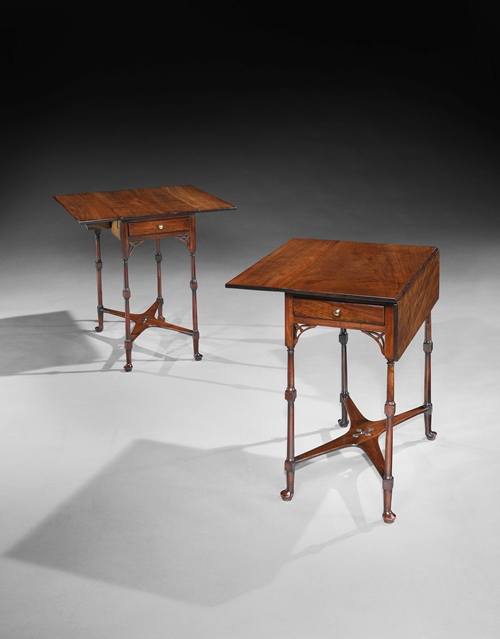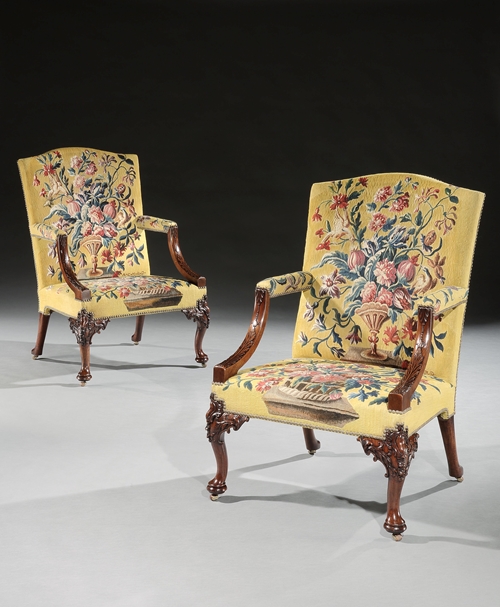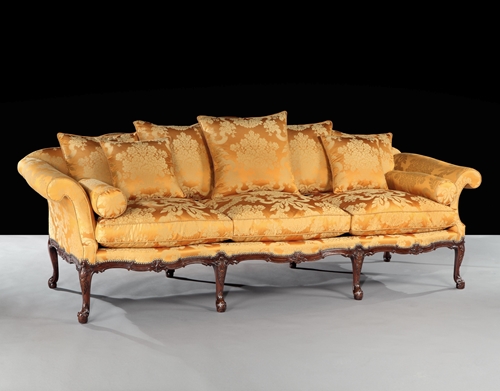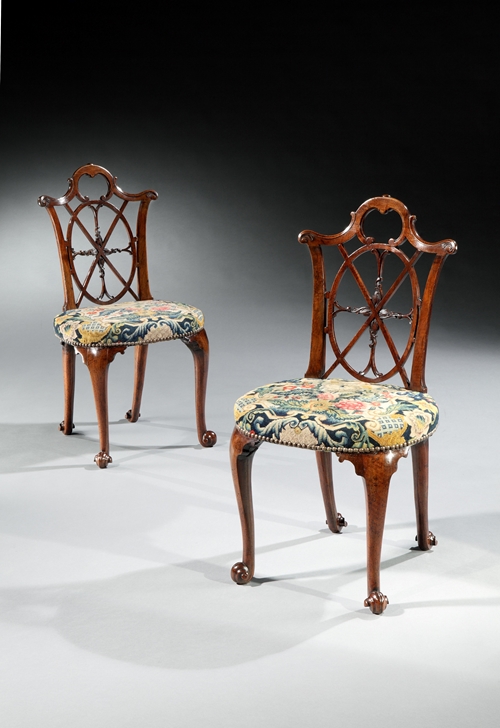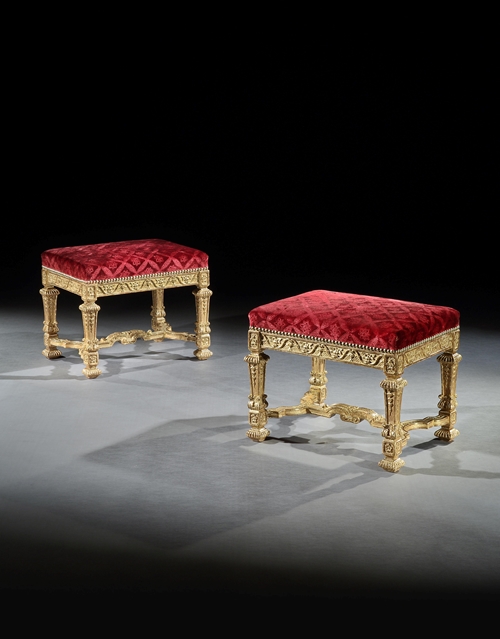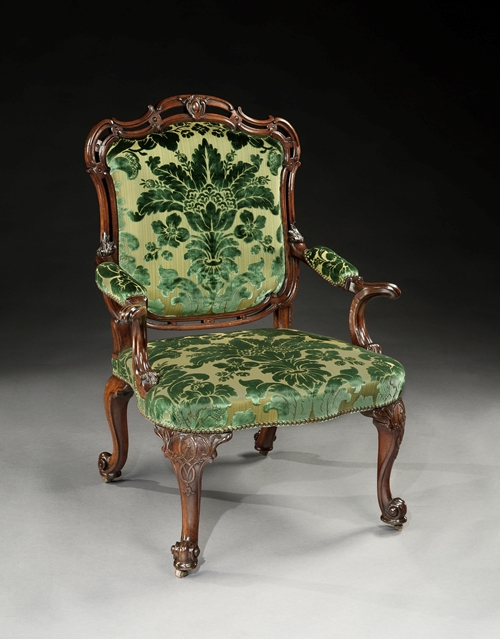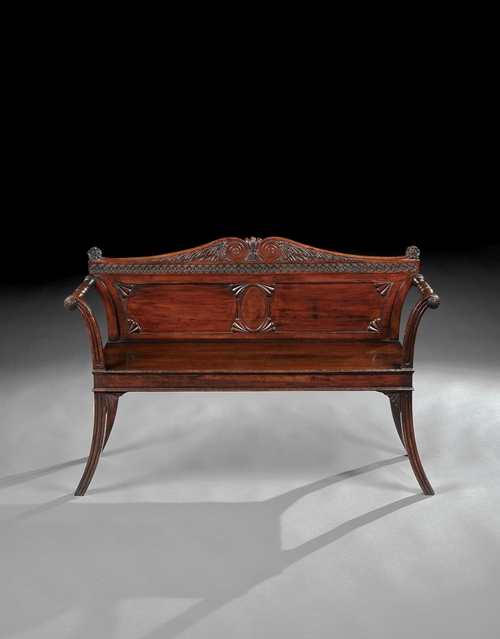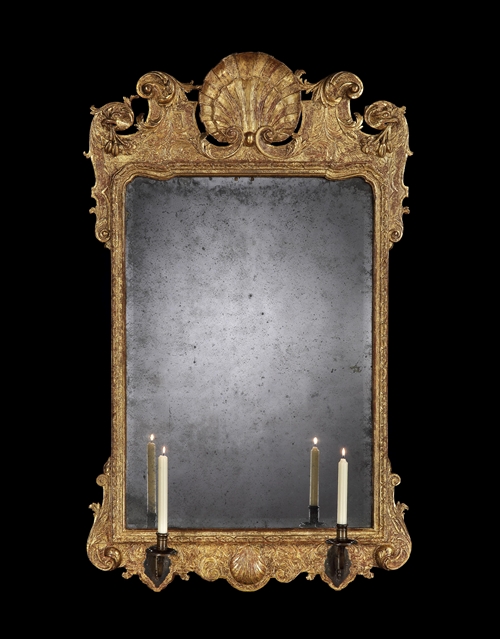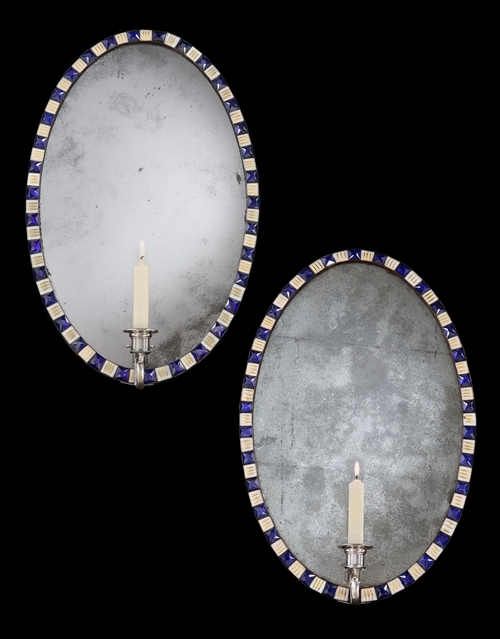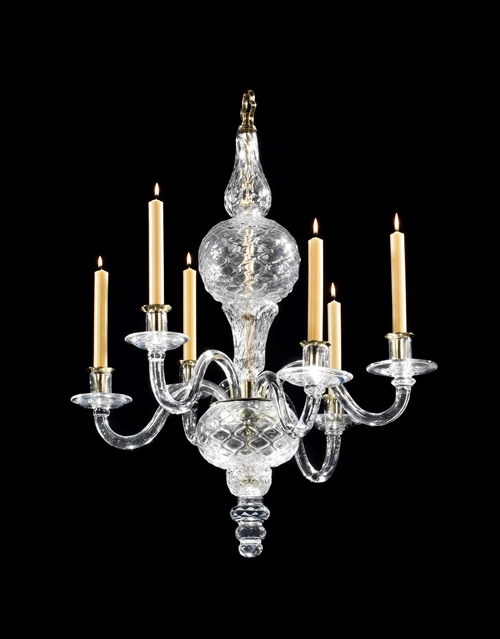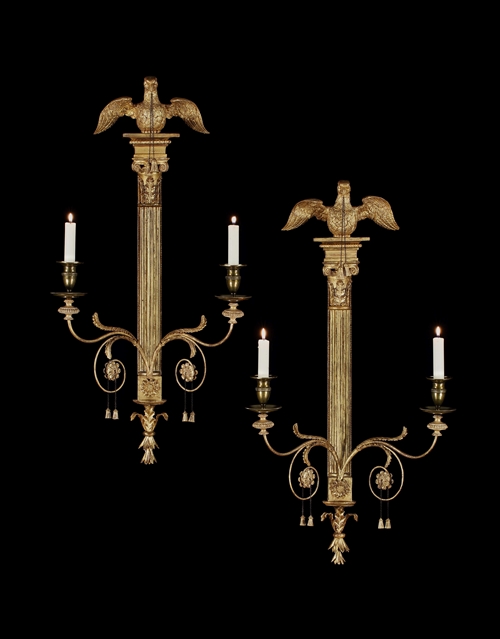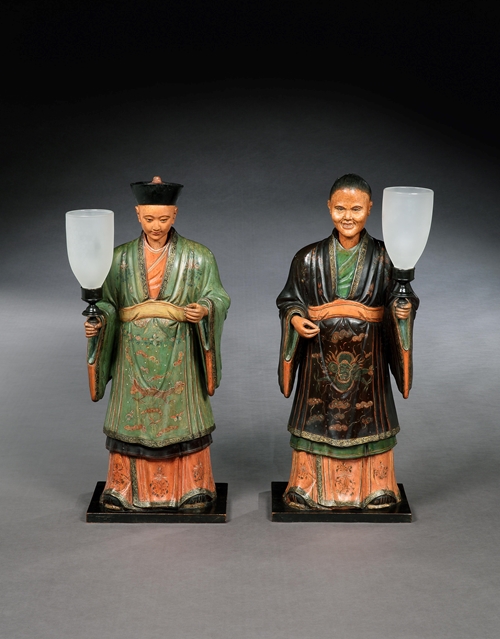An important mid 18th century carved mahogany pedestal library desk retaining its original brass handles, the rectangular strapwork carved moulded edge top inset with a later panel of green leather, the cavetto moulded frieze with shell and husk carving above a pair of frieze drawers and an arched kneehole flanked by three drawers to each side, the reverse with two simulated frieze drawers, the reverse of each pedestal with two drawers and a simulated bottom drawer, the drawers all divided by riband and rosette carved mouldings, the sides with double panelled arches and original brass carrying handles; on shaped bracket feet and castors.
This handsome and beautifully carved pedestal desk was most probably intended for use in a grand private library. Made during the period of the Grand Tour its form is inspired by that of a Roman triumphal arch with arched panelled sides and moulded panels for the drawers - an appropriate classically derived form upon which the owner could study the Ancients. A similar writing desk was made by the London cabinet maker William Hallett for the library of Temple Newsam, Yorkshire. A watercolour of the library in 1840s shows the table in its original strong classical setting fittingly lined by tall bookcases divided by massive corinthian columns surmounted by Ancient busts. The 6th Viscount Irwin was Hallett's earliest known patron and it was his brother, Henry, 7th Viscount Irwin, who probably commissioned the desk expanding upon the works started by his brother. The Irwin desk shares the same form of riband and rosette carved mouldings, architectural form and arched kneehole as the present desk as well as with a cabinet signed by Hallett.
William Hallett the elder (c. 1707-1781) was one of the most successful and prosperous cabinet makers of the first half of the 18th century. His workshops were based at Great Newport St, Long Acre, London from where he supplied furniture to a fashionable client base that included the fastidious great arbiter of taste Horace Walpole. Hallett however seems to have reduced his involvement with his firm after the 1750s to concentrate on his property interests and the building of his new house on the site of Cannons, the former extravagant Middlesex seat of the 1st Duke of Chandos who was bankrupted in the South Sea Bubble. Showing the rise in status of the family Hallett's son, William, was later to be painted with his future wife by Thomas Gainsborough in one of his most famous works ' The Morning Walk' now in the collection of the National Gallery, London.
A desk clearly from the same workshop and the same design except for a later plinth base was formerly in the noted collection of the great post war industrialist Sir Emmanuel Kaye (1914-1999).
Literature:
C. Gilbert, Furniture at Temple Newsam, Leeds, no. 829, p.661- 664, illus.
Christopher Gilbert, Pictorial Dictionary of Marked London Furniture, Leeds, 1996, fig 463
Looking for something similar? YOU MAY ALSO LIKE
YOU HAVE RECENTLY VIEWED ITEMS
- CAN WE HELP YOU?
- +44 (0)20 7493 2341
- [email protected]
